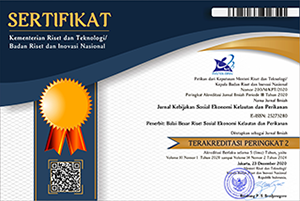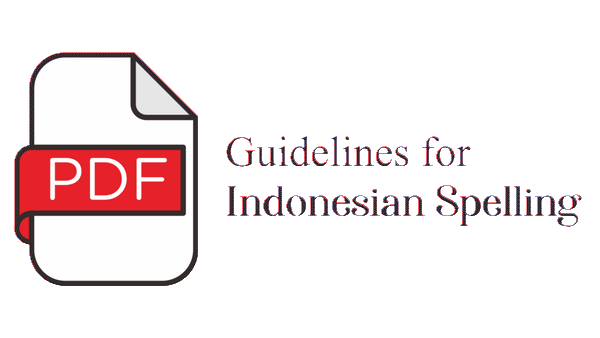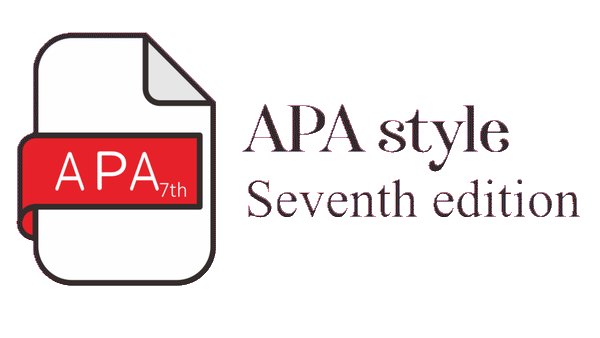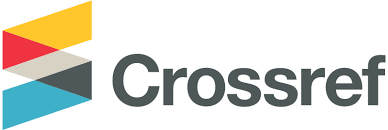ANALISIS BIOEKONOMI PERIKANAN TUNA SIRIP KUNING DI LARANTUKA, KABUPATEN FLORES TIMUR, INDONESIA
Abstract
Tingginya permintaan tuna sirip kuning baik dalam memenuhi kebutuhan pasar mancanegara dan pasar lokal, berdampak pada keberlanjutan perikanan tuna tersebut. Wilayah perairan Flores Timur adalah salah satu lokasi migrasi bagi tuna sirip kuning; Kecamatan Larantuka merupakan tempat pendaratan terpenting bagi nelayan lokal handline tuna sirip kuning. Kegiatan perikanan tuna sirip kuning ini merupakan salah satu pendapatan utama bagi nelayan lokal dan pemerintah daerah setempat. Penelitian ini bertujuan untuk mengestimasi tingkat eksploitasi dan menganalisa rezim pemanfaatan dari perikanan handline tuna sirip kuning di Larantuka, Flores Timur. Model bioekonomi Fox dan Copes digunakan dalam penelitian untuk menganalisa tingkat lestari sumber daya tuna ekor kuning dari pendekatan input dan output. Hasil estimasi dari kedua model menunjukkan bahwa tingkat pemanfaatan sumber daya ikan tuna sirip kuning oleh nelayan lokal handline masih dalam zona lestari secara ekonomi dan ekologi. Maximum economic yield (MEY) merupakan strategi terbaik untuk mengelola keberlanjutan perikanan tuna sirip kuning di perairan Flores Timur. Melalui pengelolaan rezim MEY diperkirakan dapat menyerap tenaga kerja lebih dari 30 orang, peningkatan armada alat penangkapan sebanyak 25 unit dan pemasukan keuntungan secara ekonomi sebesar Rp68.123.060.000,00 per tahun.
Title: Bioeconomic Analysis of Yellowfin Tuna Fishery in Larantuka of East Flores Regency, Indonesia
The high demand for yellowfin tuna both in national and international markets has a consequence to the fish resources sustainability. Eastern Flores water is a major area of this tuna mobility; the district of Larantuka is the central port for local yellowfin tuna handline fisheries. These activities are substantial incomes for the local community and regional government. This study, therefore, aims to calculate fish exploitation level and to analyze appropriate management for yellowfin tuna fisheries in Larantuka, East Flores. The bioeconomics Fox and Copes models are used to evaluating the optimal fisheries from input and output approaches. The models’ applications demonstrated that yellowfin tuna handline fisheries are currently estimated sustainable both in ecology and economics. During the study period, the maximum economic yield (MEY) is a recommended strategy to manage yellowfin tuna fisheries in Larantuka, Eastern Flores. The strategy contributes to increasing the number of workers about 30 people, the number of fishing fleets about 25 units and reaching the economic rent IDR 68.123.060.000,00 in a year
Keywords
Full Text:
PDFReferences
Ayunda, N., Hidayat. A., & Anna, Z. (2014). Efektivitas Kelembagaan Awik-awik dalam Mengelola Sumber daya Perikanan Pantai di Kabupaten Lombok Timur. Jurnal Ekonomi Pertanian Sumberdaya dan Lingkungan (Journal of Agriculture, Resource, and Enviromental Economics) 1(1): 12-27.
[BPS Flores Timur] Badan Statistik Flores Timur. (2013). Flores Timur Dalam Angka. Pusat Badan Statistik Flores Timur: Larantuka.
[BPS Flores Timur] Badan Statistik Flores Timur. (2010). Flores Timur Dalam Angka. Pusat Badan Statistik Flores Timur: Larantuka.
Blaber, S.J.M., Dichmint, C.M., White, W., Buckworth, R., Sadiyah, L, Iskandar, B., Nurhakim, S., Pillans, R., Andamari R., Dharmadi, & Fahmi. (2009). Elasmobranchs in Sourthern Indonesian Fisheries: the Fisheries, the Status of the Stocks and Management options. Rev.Fish Biol Fisheries (19): 367-391. DOI: 10.1007/s11160-009-9110-9.
Cadima, E. L. (2003). Fish Stock Assessment Manual. FAO Fisheries Technical Paper. No. 393. Rome, FAO. 161 pages. (diakses 20 Maret 2019).
Cooper, A. B. (2006). A Guide to Fisheries Stock Assessment From Data to Recommendations. University of New Hampshire, Sea Grant College Program. www.pewtrusts.org. (diakses 10 Maret 2019)
Fauzi, A. (2004). Ekonomi Sumber daya Alam dan Lingkungan: Teori dan Aplikasi. Gramedia, Jakarta. 111p.
Fauzi, A & Anna, Z. (2005). Pemodelan Sumber daya Perikanan. Gramedia Pustaka Utama.
Fauzi, A. (2010). Ekonomi Perikanan: Teori, Kebijakan dan Pengelolaan. Gramedia, Jakarta.
[FAO] Food and Agriculture Organization of the United Nations. (2018). The State of World Fisheries and Aquaculture 2018- Meeting the Sustainable Development Goals. Rome. Licence: CC BY-NC-SA 3.0 IGD. 210 pages. http://www.fao.org/state-of-fisheries-aquaculture. (diakses 8 January 2019).
[FAO] Food and Agriculture Organization of the United Nations. (2015). Towards the Implementation of the SSF Guidelines in the Southeast Asia Region. Procedding of the Southeast Asia Regional Consultation Workshop on the Implementation of the Voluntary Guidelines for Securing Sustainable Small-Scale Fisheries in the Context of Food Security and Poverty Eradication, Bali, Indonesia 24-27 Agustus 2015. Rome, Italy. FAO Proccedings No. 42. (diakses 8 January 2018).
[FAO] Food and Agriculture Organization of the United Nations. (2006). Stock assessment for fishery management – A framework guide to the stock assessment tools of the Fisheries Management Science Programme (FMSP). FAO Fisheries Technical Paper, 487, 60.
[FAO] Food and Agriculture Organization of the United Nations. (2004). World Tuna Market-Globefish Research Programme. Vol.74. (diakses 10 Maret 2019).
[FAO] Food and Agriculture Organization of the United Nations. (1999). Indicators for Sustainable Developement od Marine Capture Fisheries. FAO Technical Guidelines for Responsible Fisheries. No. 8. Rome. 68 pages.
Guillen,J., Macher,C., Merzereaud,M., Bertignac,M., Fifas,S. & Guyader,O. (2013). Estimating MSY and MEY in Multi-spesies and Multi-fleet Fisheries, Consequences and Limits: an application to the Bay of Biscay mixed fishery. Marine Policy (40): 64-74.
Hampton, J. (2010). Tuna Fisheries Status and Management in the Western and Central Pasific Ocean. Western and Central Pasific Fisheries Commission Report 2010. (diakses 10 Maret 2019).
Horbowy, J & Luzeńczyk, A. (2016). Effects of multispecies and density-dependent factors on MSY reference points: Example of the Baltic Sea BRPat. Canadian Journal of Fisheries and Aquatic Science. DOI: 10.1139/cjfas-2016-0220.
Horbowy, J & Luzeńczyk, A. (2012). The estimation and robustness of FMSY and alternative fishing mortality reference points associated with high long-term yield. Canadian Journal of Fisheries and Aquatic Science. 69 (9): 1468-1480.
Jacquet, J., Fox, H., Motta, H., Ngusaru, A., & Zeller, D. (2010). Few Data But Many Fish: Marine Small-Scale Fisheries Catches for Mozambique and Tanzania. Affican Journal of Marine Science, 32 (2): 197-206.
Doi: 10.2989/1814232X.2010.501559. (diakses 12 Desember 2018).
[KKP] Kementerian Kelautan dan Perikanan Indonesia. (2011). Kajian Awal Keragaan Pendekatan Ekosistem Dalam Pengelolaan Perikanan di Wilayah Pengelolaan Perikanan Indonesia. PKSPL-IPB, Institut Pertanian Bogor.
Kurniawan. (2015). Analisis potensi dan degradasi sumberdaya perikanan cumi-cumi (Urotheutis chinensis) Kabupaten Bangka Selatan (Analysis of potential and degradation of squids- Urotheutis chinensis resources in Regency of South Bangka). Akuatik-Water Resources Journal. 9 (1): 10-17.
Najamuddin., Baso, A., & Arfiansyah, R. (2016). A bio-economic analysis of coral trout grouper fish in Spermonde Archipelago, Makasar, Indonesia. International Journal of Oceans and Oceanography. 10 (2): 247-264.
Parks, W. W. (1991). A Review of Indian Ocean Fisheries for Skipjact Tuna, Katsuwonus pelamis, and Yellowfin Tuna, Thunnus albacares. Marine Fisheries Review, 53, 1.
Prellezo, R., Accadia, P., Andersen, J.L., Little, A., Nielsen, R., Andersen, B. S., Rockmann,C., Powell,J., & Buisman, E. (2009). Survey of Existing Bioeconomic models: Final Report. Sukarrieta:AZTI-Tecnalia. 283 pages.
Sevilla, C., Jesus, A.O., Twila, G.P., Bella, P.R., & Babriel, G.U. (1993). Pengantar Metode Penelitian. Universitas Indonesia-Press, Jakarta. 73p.
Singini, W., Kaunda, E., Kasulo, V., Jere, W., & Msiska, O. (2012). Bioeconomic Approach To Rebuilding Small Haplocromine Chiclids of Lake Malombe, Malawi. International Juornal of Scientific and Technology Research, 1, 11.
Sobari, M.P., Diniah & Widiastuti. (2009). Kajian Model Bionomi terhadap Pengelolaan Sumber daya Ikan Layur di Perairan Pelabuhan Ratu. Artikel. Bogor.
Svedang, H. & Hornborg, S. (2017). Historic changes in length distributions of three Baltic cod (Gadus morhua) stocks: Evidence of growth retardation. Ecology and Evolution. 1-14. DOI: 10.1002/ece3.3173.
Thiaw, M., Auger, P-A., Ngom, F., Brochier, T., Faye, S. Diankha, O. & Brehmer, P. (2017). Effect of Enviromental Conditions on the Seasonal and Inter-annual variability of small pelagic fish abundance off North-West Africa: The Case of both Senegalese sardinella. Fish Oceanography. 00:1-19.https://doi.org/10.1111/fog.12218. (diakses 10 Maret 2019).
Tsitsika, E., D Maravelias, C., Wattage, P. & Haralabous, J. (2008). Fishing Capacity and Capacity Utilization of Purse Seiners Using Data Envelopment Analysis. Fisheries Science, 74: 730-735. (diakses 10 Maret 2019).
Utami, P.B., Kusumastanto, T. & Zulbainarni, N. (2015). Pengelolaan Perikanan Cakalang Berkelanjutan dengan Pendekatan Bioekonomi di Kabupaten Flores Timur. Marine Fisheries Vol. 6, No. 1. ISSN 2087-4235: 1-11.
Utami, P.B. (2015). Kebijakan Ekonomi dalam Pengelolaan Perikanan Pelagis Besar Berkelanjutan di Kabupaten Flores Timur. Tesis. Sekolah Pascasarjana Institut Pertanian Bogor. 144 halaman.
Wiadnya, D.G.R. & Halim, A. (2008). Pengelolaan Kawasan Perlindungan Laut (KPL) yang Efektif Sebagai Alat Ukur Pengelolaan Perikanan Tangkap Di Indonesia. Makalah dalam Seminar Nasional Pembangunan Kelautan Kawasan Iindonesia Timur yang Tangguh dalam Pengembangan Ekonomi Sumber daya Pesisir dan Laut. Manado, 20 November 2008.
Yuniarta, S., van Zwieten, P.A.M., Groeneveld, R.A., Wisudo, S.H., & van Ierland, E.C. Uncertainty in catch and effort data of small- and medium –scale tuna fisheries in Indonesia: Source, operaional causes and magnitude. Fisheries Research (193): 173-183. DOI:10.1016/j.fishres.2017.04.009.
Zeller, D., Rossing, P., Harper, S., Persson, L., Booth, S., & Pauly, D. (2010). The Baltic Sea: Estimates of Total Fisheries Removals 1950-2007. Fisheries Research (108): 356-363. DOI:10.1016/j.fishres.2010.10.024.
Zulbainarni, N. (2012). Teori dan Praktik Pemodelan Bioekonomi Dalam Pengelolaan Perikanan Tangkap. Institut Pertanian Bogor Press, Bogor.
DOI: http://dx.doi.org/10.15578/jksekp.v10i1.7766
Indexed by:
---------------------------------------------------------------------------------------
Published by
Research Center for Marine and Fisheries Socio-Economic
in collaboration with
Indonesian Marine and Fisheries Socio-Economics Research Network
This work is licensed under a Creative Commons Attribution-NonCommercial-ShareAlike 4.0 International License.













3.png)











